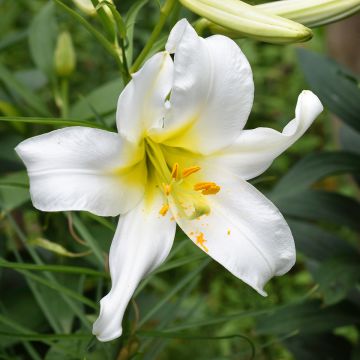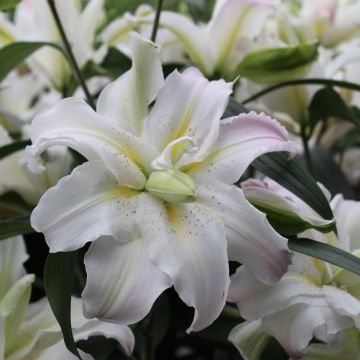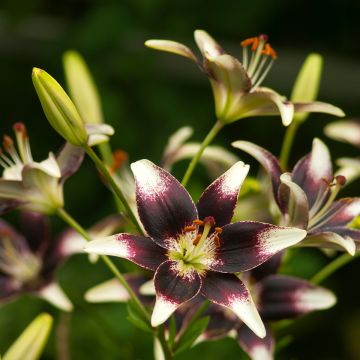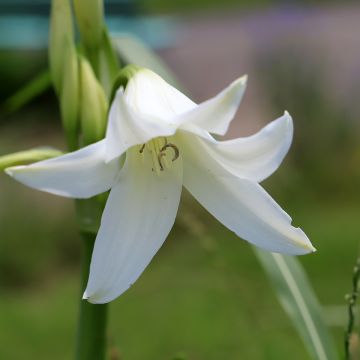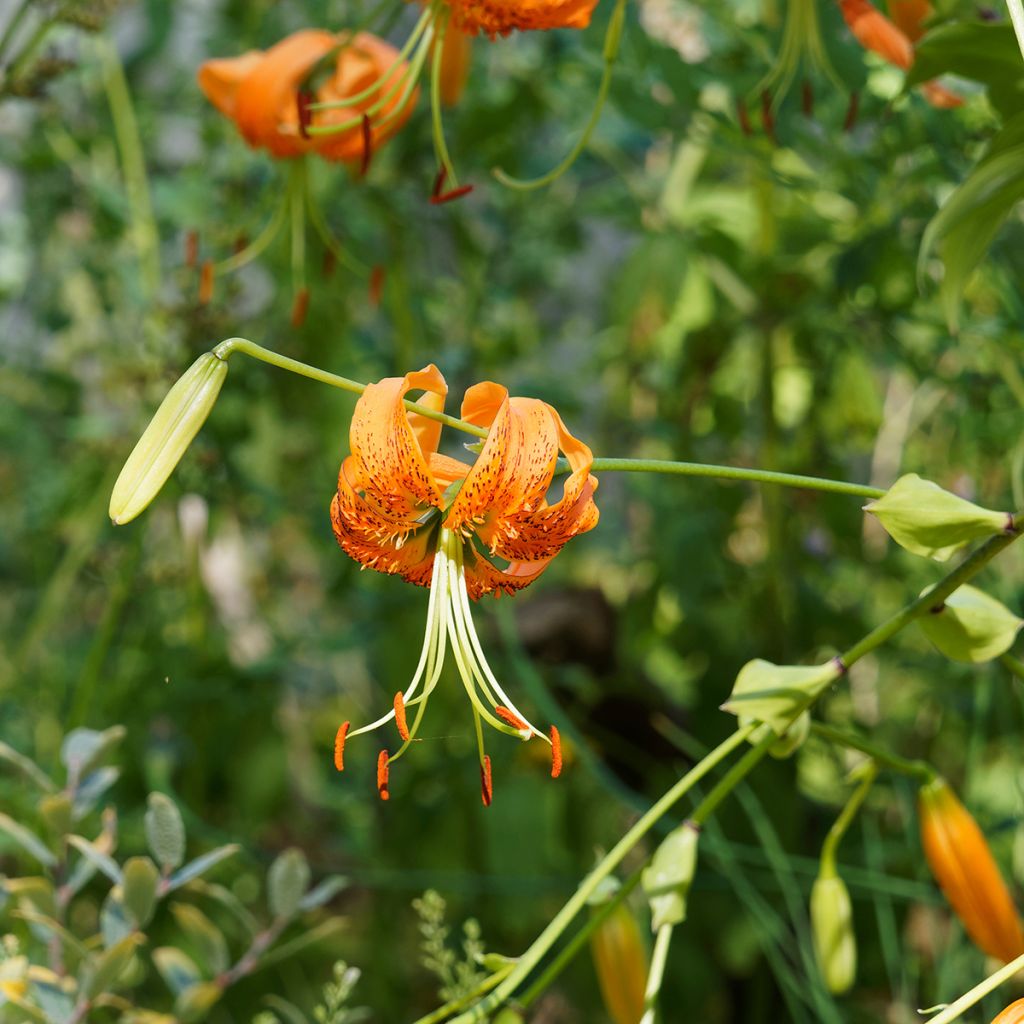

Lis botanique henryi


Lis botanique henryi


Lis botanique henryi


Lis botanique henryi


Lis botanique henryi


Lis botanique henryi


Lis botanique henryi
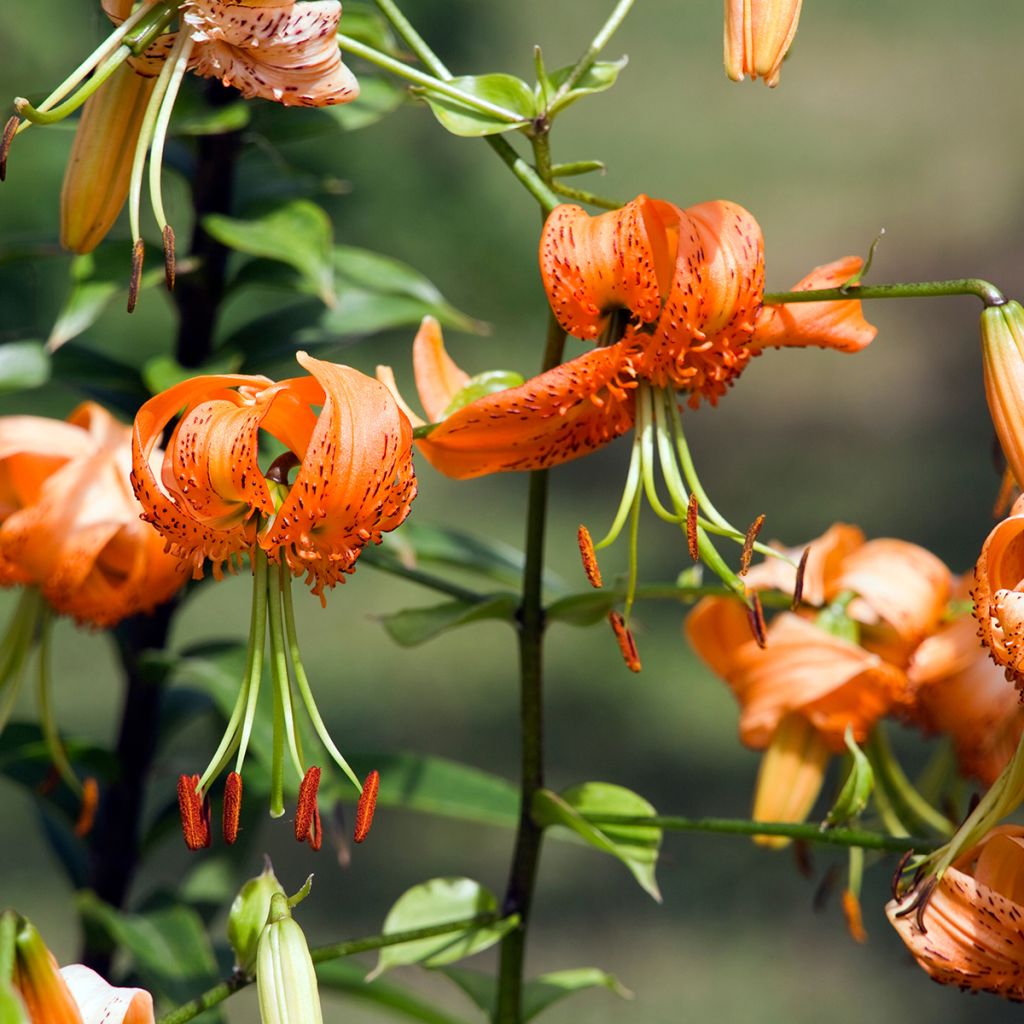

Lis botanique henryi


Lilium henryi


Lilium henryi
Lilium henryi
Lilium henryi
Henry's Lily, Tiger Lily
This item cannot be shipped to the selected country
Delivery charge from €5.90
More information
Schedule delivery date,
and select date in basket
This plant carries a 6 months recovery warranty
More information
We guarantee the quality of our plants for a full growing cycle, and will replace at our expense any plant that fails to recover under normal climatic and planting conditions.
From €5.90 for pickup delivery and €6.90 for home delivery
Express home delivery from €8.90.
Does this plant fit my garden?
Set up your Plantfit profile →
Description
Lilium henryi, sometimes called Henry's Lily, should be planted more often like the Royal Lily or the Madonna Lily, due to its incredible adaptability. This giant bulb, native to central China, is one of the most accommodating in terms of soil and climate, and one of the most reliable. Emerging from the ground to over 2 metres (7 feet) tall, its sturdy stem bears up to forty, apricot-orange flowers in August, with inclined and curled petals resembling lanterns. The petals have the peculiar fleshy crests characteristic of this species. Planted in well-drained soil, even limestone and dry in summer, it will faithfully flower every year once established.
Lilium henryi is a botanical species that grows in the mountains of central China, particularly in the gorges of the Yangtze, on limestone soil. This species, which could almost be called forest-dwelling, is vigorous and easy to grow. Lilium henryi is a bulbous plant with dark red scales and deciduous foliage, forming a narrow and very vertical clump from spring onwards. It belongs to the Liliaceae family. This robust, tall and slender plant will reach a height of 2m (7ft) to 2.5m (8ft) (sometimes 3m (10ft)) in flower, and the clump will slowly spread, as the plant produces a few bulblets through vegetative multiplication. An old bulb can weigh up to 250g before dividing. In August, 7 to 9 cm (3 to 4in) wide flowers appear, grouped in 2 or 3 in a terminal pyramid-shaped umbel on robust and flexible stems that do not need staking. These flowers are pendulous and their petals curl at maturity. Each stem bears 20 to 40 well-spaced flowers, composed of 6 recurved tepals, in a soft orange colour that fades in the sun, splashed with reddish-brown lines and dots and adorned with small fleshy protrusions resembling thorns. The flower's centre releases long green filaments and dark red anthers. The whorled, dark green leaves are relatively small, quite wide and pointed and shorter towards the top of the floral stem. It is a very long-lived plant that naturalises over time. You must plant at least two different individuals to produce seeds, as this lily reproduces through cross-pollination.
In your garden, you can grow this lily with hybrid martagon lilies (such as Orange Marmalade and Claude Shryde), which tolerate similar growing conditions, or with perennial plants and grasses, as the lilies like shade at their base. You can also grow it in a pot to bring it closer to your terrace or window borders and fully enjoy its exceptional, wildly graceful flowers.
Report an error about the product description
Lilium henryi in pictures




Plant habit
Flowering
Foliage
Botanical data
Lilium
henryi
Liliaceae
Henry's Lily, Tiger Lily
China
Other Botanical Lilies
Planting and care
The henryi lily establishes itself a little more slowly than Asian, trumpet, or Oriental lilies. It may take an extra season before flowering, and planting conditions must be right. It must have good drainage, rocky or sandy and humus-rich soil is perfect, so that the bulbs are not in a substrate that is too wet during their dormancy period after flowering. It is strongly recommended not to use multi-purpose compost for the Henry lily or its hybrids, but adding well-rotted compost or leaf soil in autumn is a good idea. This lily likes slightly humus-rich and moist soils during its growing period, and limestone is not a problem in fertile soil. You should plant the bulbs in partial shade or non-scorching sun, preferably in October or spring, 20 to 25 cm (8 to 10in) deeper than other lilies because its stems will root, in a pocket of soil, mixed with leaf mold. You can surround them with a layer of sand that will prevent rot and attacks by slugs. Mark the planting location, as vegetation only starts in April.
Staking may be necessary in windy situations, as the stems can sometimes be very tall. If red lily beetles appear, treat them immediately, as their larvae can devour all the leaves. The most effective method is to catch them manually but be careful as they drop as soon as they are touched. After flowering, it is a good idea to cut the faded flowers halfway to keep the bed beautiful during the summer. Your lilies will be dispatched in early October. Lilies are very suitable for growing in pots. Plant 1 to 5 bulbs in a deep pot, water a little and place your pots in a frost-free place. Bring them out in spring and enjoy them on your terrace!
Planting period
Intended location
Care
-
, onOrder confirmed
Reply from on Promesse de fleurs
Hardy summer bulbs
Haven't found what you were looking for?
Hardiness is the lowest winter temperature a plant can endure without suffering serious damage or even dying. However, hardiness is affected by location (a sheltered area, such as a patio), protection (winter cover) and soil type (hardiness is improved by well-drained soil).

Photo Sharing Terms & Conditions
In order to encourage gardeners to interact and share their experiences, Promesse de fleurs offers various media enabling content to be uploaded onto its Site - in particular via the ‘Photo sharing’ module.
The User agrees to refrain from:
- Posting any content that is illegal, prejudicial, insulting, racist, inciteful to hatred, revisionist, contrary to public decency, that infringes on privacy or on the privacy rights of third parties, in particular the publicity rights of persons and goods, intellectual property rights, or the right to privacy.
- Submitting content on behalf of a third party;
- Impersonate the identity of a third party and/or publish any personal information about a third party;
In general, the User undertakes to refrain from any unethical behaviour.
All Content (in particular text, comments, files, images, photos, videos, creative works, etc.), which may be subject to property or intellectual property rights, image or other private rights, shall remain the property of the User, subject to the limited rights granted by the terms of the licence granted by Promesse de fleurs as stated below. Users are at liberty to publish or not to publish such Content on the Site, notably via the ‘Photo Sharing’ facility, and accept that this Content shall be made public and freely accessible, notably on the Internet.
Users further acknowledge, undertake to have ,and guarantee that they hold all necessary rights and permissions to publish such material on the Site, in particular with regard to the legislation in force pertaining to any privacy, property, intellectual property, image, or contractual rights, or rights of any other nature. By publishing such Content on the Site, Users acknowledge accepting full liability as publishers of the Content within the meaning of the law, and grant Promesse de fleurs, free of charge, an inclusive, worldwide licence for the said Content for the entire duration of its publication, including all reproduction, representation, up/downloading, displaying, performing, transmission, and storage rights.
Users also grant permission for their name to be linked to the Content and accept that this link may not always be made available.
By engaging in posting material, Users consent to their Content becoming automatically accessible on the Internet, in particular on other sites and/or blogs and/or web pages of the Promesse de fleurs site, including in particular social pages and the Promesse de fleurs catalogue.
Users may secure the removal of entrusted content free of charge by issuing a simple request via our contact form.
The flowering period indicated on our website applies to countries and regions located in USDA zone 8 (France, the United Kingdom, Ireland, the Netherlands, etc.)
It will vary according to where you live:
- In zones 9 to 10 (Italy, Spain, Greece, etc.), flowering will occur about 2 to 4 weeks earlier.
- In zones 6 to 7 (Germany, Poland, Slovenia, and lower mountainous regions), flowering will be delayed by 2 to 3 weeks.
- In zone 5 (Central Europe, Scandinavia), blooming will be delayed by 3 to 5 weeks.
In temperate climates, pruning of spring-flowering shrubs (forsythia, spireas, etc.) should be done just after flowering.
Pruning of summer-flowering shrubs (Indian Lilac, Perovskia, etc.) can be done in winter or spring.
In cold regions as well as with frost-sensitive plants, avoid pruning too early when severe frosts may still occur.
The planting period indicated on our website applies to countries and regions located in USDA zone 8 (France, United Kingdom, Ireland, Netherlands).
It will vary according to where you live:
- In Mediterranean zones (Marseille, Madrid, Milan, etc.), autumn and winter are the best planting periods.
- In continental zones (Strasbourg, Munich, Vienna, etc.), delay planting by 2 to 3 weeks in spring and bring it forward by 2 to 4 weeks in autumn.
- In mountainous regions (the Alps, Pyrenees, Carpathians, etc.), it is best to plant in late spring (May-June) or late summer (August-September).
The harvesting period indicated on our website applies to countries and regions in USDA zone 8 (France, England, Ireland, the Netherlands).
In colder areas (Scandinavia, Poland, Austria...) fruit and vegetable harvests are likely to be delayed by 3-4 weeks.
In warmer areas (Italy, Spain, Greece, etc.), harvesting will probably take place earlier, depending on weather conditions.
The sowing periods indicated on our website apply to countries and regions within USDA Zone 8 (France, UK, Ireland, Netherlands).
In colder areas (Scandinavia, Poland, Austria...), delay any outdoor sowing by 3-4 weeks, or sow under glass.
In warmer climes (Italy, Spain, Greece, etc.), bring outdoor sowing forward by a few weeks.






































